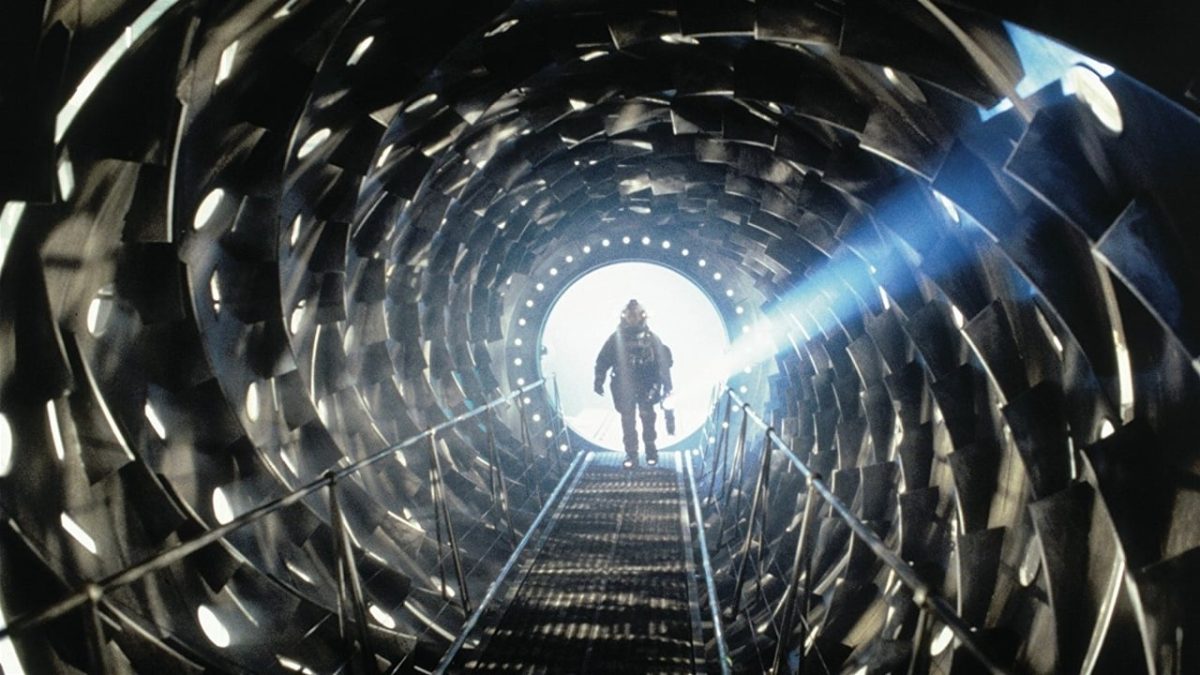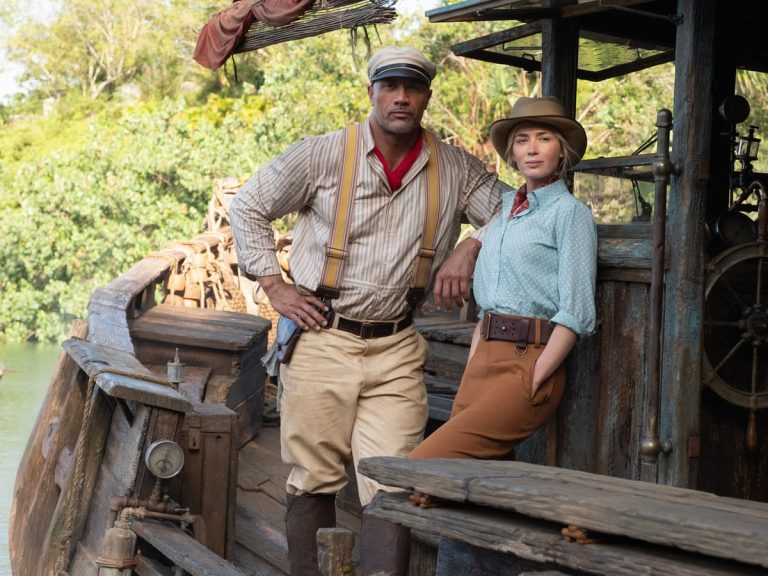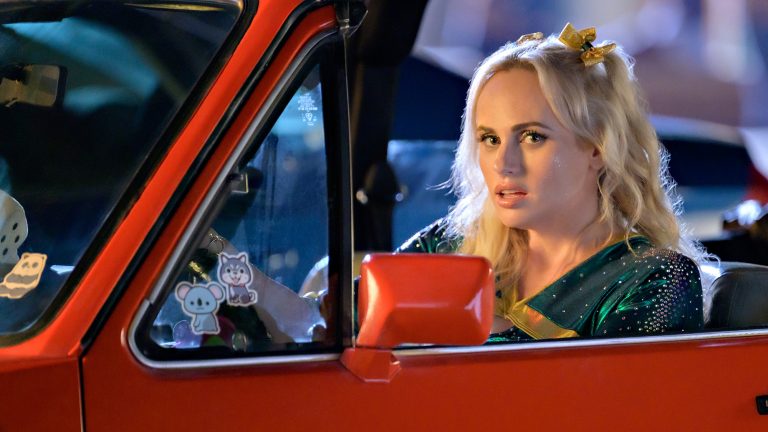The vast unknowns of space can be used to mirror the darkest corners of the human psyche, and when filmmakers manage to fuse the two effectively, the results can often be unforgettable. Paul W.S. Anderson’s “Event Horizon” is one of those films.
Released in 1997 to underwhelming reviews and a modest box office run, it has since been reclaimed as a cult classic, admired for its unsettling atmosphere, gothic production design, and its willingness to plunge headfirst into zany horror territory. I rewatch this movie every year during the fall season, and I am quickly reminded of why I admire it. The atmosphere is on another level. This film does itself justice through its aesthetic design, an important aspect of making a film last.
On the surface, “Event Horizon” tells a simple story: in 2047, a rescue crew led by Captain Miller (Laurence Fishburne) is sent to investigate the sudden reappearance of the Event Horizon, a spaceship that vanished without explanation seven years earlier while testing a gravity drive. The ship was designed by Dr. William Weir (Sam Neill), who joins the crew in their search.
What begins as a routine salvage mission quickly devolves into something much darker when it becomes clear that the Event Horizon has not simply traveled faster than light; it has opened a gateway into another dimension, one that seems indistinguishable from hell. What makes the film resonate more than twenty-five years later isn’t just the high-concept hook, but the way Anderson stages it. The director takes his time letting the dread seep in.
The rescue ship Lewis and Clark approaches the looming silhouette of the Event Horizon like a group of explorers circling a haunted castle. Once aboard, the crew wanders through cavernous corridors, shadow-drenched medical bays, and an impossibly baroque engine room that looks less like a machine than some kind of altar. The design of the ship itself is one of the film’s triumphs; it feels futuristic and yet ancient at the same time.
Visually, the movie bridges two traditions of science fiction. On one side is the industrial grime aesthetic, with steel corridors, blinking monitors, and utilitarian spaces. On the other is something closer to a medieval nightmare, with arches, spikes, and bloodied visions that seem pulled from Dante or Hieronymus Bosch. The fusion is audacious and effective: that Event Horizon is not just a spaceship, it’s a character itself. It feels like something that borders on H.P. Lovecraft territory.
The performances anchor the surreal terror in something human. Laurence Fishburne’s Captain Miller embodies rationality and leadership, the professional soldier trying to keep his crew alive in the face of the impossible. His performance is great in that he seems to genuinely want to leave the ship once he finds out that it might be harmful. Sam Neill is the film’s wild card performance. As Dr. Weir, Neill begins as a nervous scientist trying to explain the mechanics of the ship’s gravity drive, but as the film progresses, his psyche unravels.
Haunted by visions of his deceased wife, Weir becomes consumed by the dark dimension he’s inadvertently tapped into, transforming into something evil. Neill’s performance is fearless, moving from understated grief to full-blown insanity with chilling conviction. I love the scene when he turns around in his chair, uttering the line “Where we’re going, we won’t need eyes to see.”
Also Read: 30 Underrated Sci-Fi Movies From Across The Globe

“Event Horizon” is not just shock and gore. The film taps into something deeper: the idea that space exploration, humanity’s greatest ambition, might open doors we are not meant to walk through. The horror here is not just that the Event Horizon traveled to another dimension, but that it came back infected, transformed, and now with a mission. Each crew member is confronted with visions tailored to their fears and regrets, suggesting that the other dimension feeds on personal torment.
The result is psychological as much as physical horror, blurring the line between the external threat of the ship and the internal demons each character carries with them. Critics in 1997 were not kind to “Event Horizon.” But time has been kind to the film, revealing it as more than the sum of its influences. “Event Horizon” presents a vision of space itself as an abyss, a place where human ambition brushes against forces we can’t contain.
The film’s legacy has only grown. Its visual design influenced later works, from video games like “Dead Space” to horror-inflected science fiction on television. Its cult following has elevated it from a forgotten studio release to a touchstone in discussions of cosmic horror on film. For audiences today, especially those accustomed to the sleek optimism of contemporary sci-fi, “Event Horizon” offers something rare: a space film that dares to be terrifying.
Ultimately, “Event Horizon” endures because it treats horror with the same seriousness that it applies to science fiction. It suggests that the frontier of space is not just full of wonder but of unimaginable terror, and that what lies beyond the stars may not be alien civilizations or new worlds, but something far worse, the reflection of our own deepest fears.
More than twenty-five years after its release, the film stands as a singular experience, a gothic nightmare in zero gravity. “Event Horizon” may have been dismissed in its time, but today it feels essential, a bold experiment in genre fusion that still has the power to captivate. And because of this, it has a strong rewatch factor.


![Double Life [2017]: NYAFF Review](https://79468c92.delivery.rocketcdn.me/wp-content/uploads/2017/06/adoublelife-1600x900-c-default-768x432.jpg)
![Graduation [2016] : Bengaluru International Film Festival [BIFFES]](https://79468c92.delivery.rocketcdn.me/wp-content/uploads/2016/12/Graduation-768x324.jpg)

![The Assassin [2015] : Visual Poetry](https://79468c92.delivery.rocketcdn.me/wp-content/uploads/2016/09/assassin_hi_res_3-768x512.jpg)
![Train of Shadows [1997] Review: A Rich tribute to the Visual capacity of Cinema](https://79468c92.delivery.rocketcdn.me/wp-content/uploads/2019/12/tren-de-sombras-768x506.jpg)
